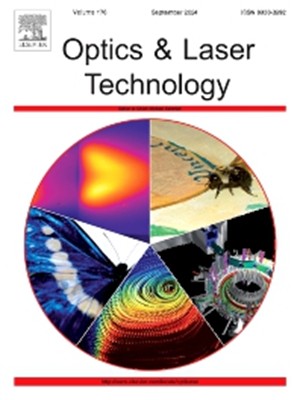Design and application of transparent conductive films in the visible to short-wave infrared region: A review
IF 4.6
2区 物理与天体物理
Q1 OPTICS
引用次数: 0
Abstract
Transparent conductive films are critical in numerous applications, including display technology, sensor technology, energy science, military technology, and biomedical applications. However, commercially available indium tin oxide (ITO) has several shortcomings that limit its practical use, such as indium scarcity, high deposition temperatures, mechanical fragility, and limited optical transmission bands. These issues hinder the development of infrared optoelectronic devices. Optimizing electrical conductivity while maintaining optical transparency from visible to Short-wave infrared wavelengths presents significant challenges. To fabricate broadband transparent conductive films, this paper summarizes two major research directions. First, optimizing traditional films involves compositional tuning, optimization of preparation parameters, and doping strategies to enhance film performance. Second, developing new materials, such as carbon nanomaterials, metal nanowires, and ultrathin metal films, is crucial. This paper also details emerging applications of these materials in broadband optoelectronic devices, such as electromagnetic shielding, photodetectors, and solar cells, and offers a forward-looking perspective on future development trends. Overall, this work provides a comprehensive review of recent advancements in broadband transparent conductive films across multiple aspects, including optimization, preparation, applications, and challenges.
求助全文
约1分钟内获得全文
求助全文
来源期刊
CiteScore
8.50
自引率
10.00%
发文量
1060
审稿时长
3.4 months
期刊介绍:
Optics & Laser Technology aims to provide a vehicle for the publication of a broad range of high quality research and review papers in those fields of scientific and engineering research appertaining to the development and application of the technology of optics and lasers. Papers describing original work in these areas are submitted to rigorous refereeing prior to acceptance for publication.
The scope of Optics & Laser Technology encompasses, but is not restricted to, the following areas:
•development in all types of lasers
•developments in optoelectronic devices and photonics
•developments in new photonics and optical concepts
•developments in conventional optics, optical instruments and components
•techniques of optical metrology, including interferometry and optical fibre sensors
•LIDAR and other non-contact optical measurement techniques, including optical methods in heat and fluid flow
•applications of lasers to materials processing, optical NDT display (including holography) and optical communication
•research and development in the field of laser safety including studies of hazards resulting from the applications of lasers (laser safety, hazards of laser fume)
•developments in optical computing and optical information processing
•developments in new optical materials
•developments in new optical characterization methods and techniques
•developments in quantum optics
•developments in light assisted micro and nanofabrication methods and techniques
•developments in nanophotonics and biophotonics
•developments in imaging processing and systems

 求助内容:
求助内容: 应助结果提醒方式:
应助结果提醒方式:


